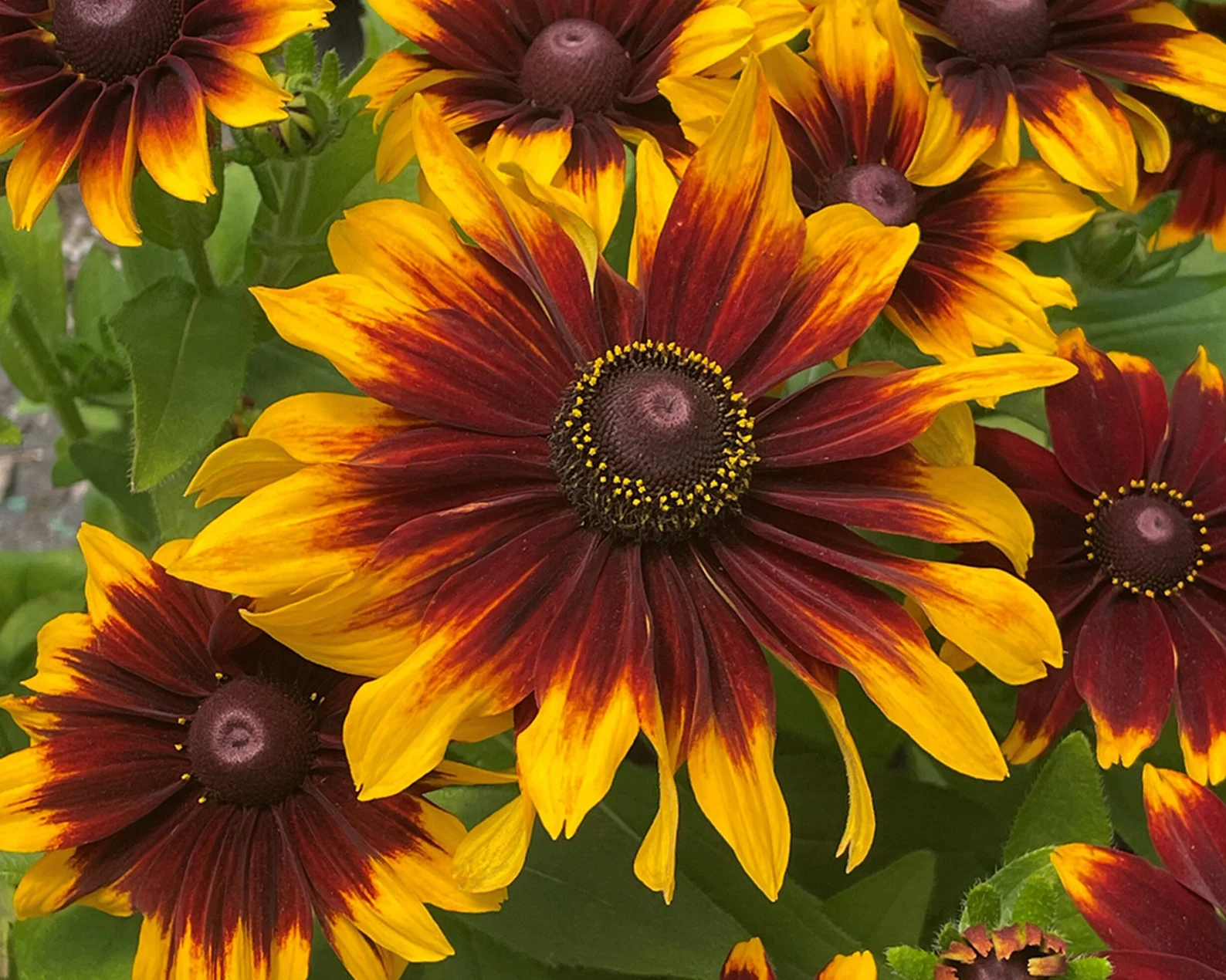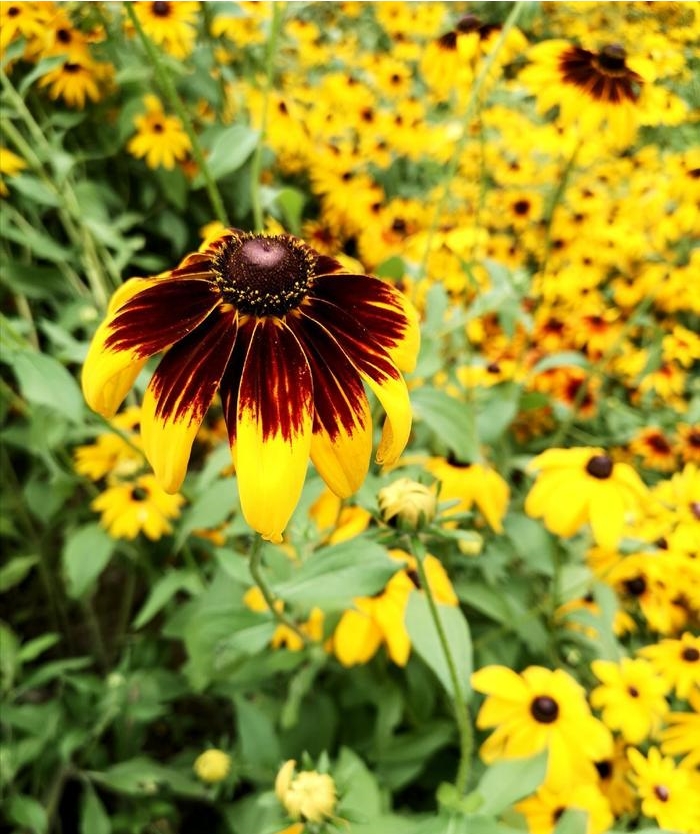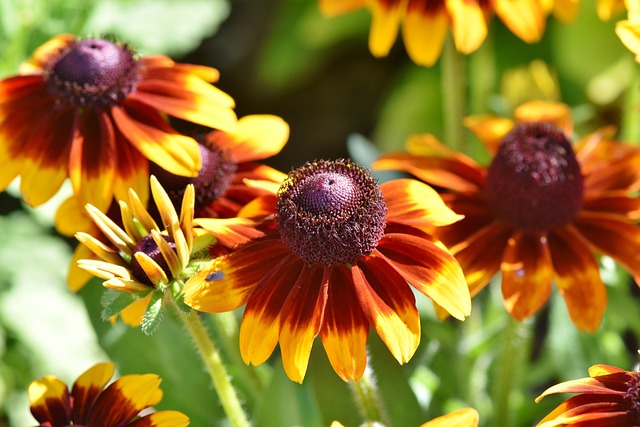











Rudbeckia Black Eyed Susan Mix Flower Seeds-- Golden Coneflower
Regular price $25.99 Sale price $12.99 Save $13.00
🎁💐Don't forget to get some for your family and friends as it's a unique gift idea.
🛒 Payments Via PayPal® and CreditCard
💵The merchant deposit of USD 100,000 has been paid to PayPal. has been paid to PayPal.

Black-eyed Susans (Rudbeckia hirta) are native to North America and one of the most popular wildflowers grown. They tend to blanket open fields, often surprising the passerby with their golden-yellow beauty.
Rudbeckia hirta, commonly called black-eyed Susan, is a North American flowering plant in the sunflower family, native to Eastern and Central North America and naturalized in the Western part of the continent as well as in China.
Scientific name: Rudbeckia hirta
Order: Asterales
Family: Asteraceae
Higher classification: Coneflowers
Members of the sunflower family, the “black eye” is named for the dark, brown-purple centers of its daisy-like flower heads. The plants can grow to over 3 feet tall, with leaves of 6 inches, stalks over 8 inches long and flower diameter of 2 to 3 inches.
Butterflies, bees, and a variety of insects are attracted to the flowers for the nectar. As they drink the nectar, they move pollen from one plant to another, causing it to grow fruits and seeds that can move about easily with the wind.
These plants bloom from June to October. Note that they can be territorial in that they tend to squash out other flowers growing near them.
Black-eyed Susans are good for cut flowers; they also work well for borders or in containers.
Planting:
• Plant black-eyed Susans when the soil temperature has reached 70°F for best seed germination. In many parts of North America, the planting period is March to May. The flower will flower June to September. Germination takes 7 to 30 days.
• Plant seeds in moist, well-drained soil.
• These hearty flowers really enjoy the Sun. They prefer full sun, though they’ll grow in partial sun.
• Sow by seed in loosely covered soil.
• It’s best if soil is fertile (not poor) though they can tolerate tough conditions.
• Black-eyed Susans generally grow between 1 and 3 feet tall (though they can grow taller) and can spread between 12 to 18 inches, so plant seeds closer to prevent lots of spreading or plant further apart to make a nice border.
Care:
• Check your plants regularly to see if they need watering. Make sure they don’t dry out.
• Divide perennial types every 3 to 4 years to ensure healthy plants and to prevent excessive spreading.
• Be sure to remove faded/dead flowers to prolong blooming.
• You can cut back black-eyed Susans after they flower and a second, smaller bloom may occur in late fall.

Most Rudbeckia varieties come in shades of yellow or orange, with a dark center seed head, but the flower heads are actually quite varied. There are Rudbeckia with petals in russet, bronze, and mahogany tones.Mar 17, 2019
Flower Color: Yellow, orange, russet, bronze, ...
Common Names: Black-eyed Susan, brown-e...
Black-Eyed Susan grows perfectly in gardens, in borders and in flower beds, and it is a great summer time bloomer. Butterflies of many species are attracted to its bright blooms. It grows in all regions of North America in any soil from sand to clay, but it must have full sun. Black-eyed Susan care includes deadheading to prolong the bloom season, but the plants will re-seed themselves readily if you leave a few blooms to go to seed.
Sow Black-Eyed Susan wildflower seeds outdoors any time in the late fall or as early in the spring as the ground can be cultivated. Prepare soil by loosening the top 1 - 2 inches and removing any weeds. Sow the Rudbeckia Hirta seeds into the loosened soil and rake in. Walk over the area to gently press the wildflower seeds into the soil. Keep the Black Eyed Susan seeds moist until germination. Rudbeckia plants transplant well and should be spaced 12 - 18 inches apart. The Black Eyed Susan plant forms a clump that will reach 12 inches in width. Considered a biennial, it will not bloom much the first year the flower seeds are sown. The following year will bring many more blooms. The seed is small, but it is considered to be very easy to grow. Rudbeckia Hirta seeds are a staple of any good wildflower seed mixture and the golden yellow blooms are a major color-maker in any wild flower garden.

Season: Biennial
USDA Zones: 3 - 9
Height: 24 inches
Bloom Season: Late summer and fall
Bloom Color: Golden yellow
Environment: Full sun
Soil Type: Any soils that are not too dry, pH 5.8 - 6.8
Deer Resistant: Yes
Temperature: 70F (21 C)
Average Germ Time: 7 - 30 days
Light Required: Yes
Depth: Do not cover the seed but press into the soil
Sowing Rate: 1/2 ounce per 1,000 square feet or 2 pounds per acre
Moisture: Keep seeds moist until germination
Plant Spacing: 12 - 18 inches

PayPal is welcomed here.
If you want to checkout with Credit Card. Please Click Paypal and Search for ‘Pay with Debit or Credit Card'


